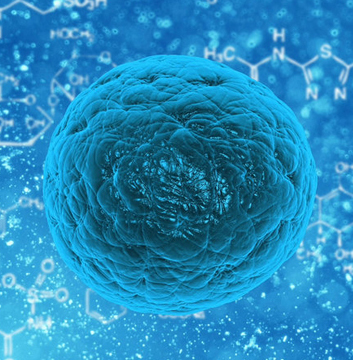
25 years ago, a team of our scientists were celebrating. Their risky strategy had paid off.
“You look back and you do wonder about how we decided to do this, and basically it was because we believed that it was better to do high-risk research that potentially would be important,” recalls team leader Professor Mike Stratton, “but with the full knowledge that, perhaps, the gene didn’t exist.”
But exist it did – in fact, the team had just pinpointed the location of what would become one of the most famous ‘cancer genes’ known to science – BRCA2.
And in the process, they opened the door to ways to give people more certainty about their risk of cancer and paved the way for new and better treatments.
The hunt for BRCA2
The hunt for ‘breast cancer’ genes began in the 1940s, when researchers discovered that the disease could occasionally run in families. It became clear in the following years that these clusters of breast cancers in families were caused by faulty genes.
But pinpointing the specific genes responsible would take decades. We’ve written before about the race to discover the first breast cancer gene, dubbed Breast Cancer 1 or BRCA1, which was found to sit on chromosome 17 in 1990 by a team of US researchers.
“Much of the focus after BRCA1 was located was on clarifying that discovery, confirming it and narrowing down exactly where BRCA1 was,” says Professor Stratton, who is now the Director of the Wellcome Sanger Institute in Cambridge, UK. “But we decided to do something different.”
There was evidence that BRCA1 might not be the only gene linked to breast cancer. Could there be another? Stratton, who back then had only recently started leading his own group at The Institute of Cancer Research (ICR), turned his focus to the hunt for a second gene. It was a risky strategy.
“Whether there was one or not, was not at all clear at that time. Indeed, there were those who felt strongly that there was only one of these high-risk genes and that BRCA1 was it. Nevertheless, we felt that if there was a second gene like it, that would be an important thing to follow through.”
With funding from one of our forerunners – Cancer Research Campaign – the Medical Research Council and others, Stratton’s team began searching. The first thing they needed was a collection of families who were strongly affected by breast cancer, which led them to Ireland.
“We wrote to all the oncologists and one replied, Peter Daly. He was working with a family in Ireland who had 4 cases of breast cancer, 4 sisters who were diagnosed at a young age. By the time we started working with him that had become 5 sisters. And our first job was to find out whether this cluster was due to BRCA1.”
Early on, the team got a signal that it wasn’t, which gave them strong evidence that another gene existed.
Armed with this knowledge, the team followed a similar process that led to the localisation of BRCA1, scouring the human genome for stretches of DNA that everyone in the family who had breast cancer had in common. But after 7 months, they hit a wall. “We really couldn’t find it. It was one of those moments when your team looks to you for inspiration or new ideas, and the best I could come up with was: let’s do it all again. So we did.”
The team’s persistence paid off. Stratton says he remembers the afternoon that one of his team, Richard Wooster, came into the office with an x-ray film that appeared to show the location of the elusive second gene, on one of the 23 different chromosomes that makes up the human genome. “We came into work that morning not knowing where the gene was, and we went home that evening knowing it was on chromosome 13.”
The next step was to precisely identify which gene on this massive stretch of DNA was responsible – something that, back before the publication of the full map of the human genome, was a painstaking task. And it quickly became a race, as former collaborators in the US teamed up with a genetics company who wanted to find and patent the gene, something that Stratton was strongly against.
Teaming up with labs across the world, including that of his colleague Professor Alan Ashworth at the ICR and scientists at the Wellcome Sanger Institute, they began the laborious process of identifying which gene on chromosome 13 was BRCA2.
“It seems amazing looking back that we had to physically find genes, rather than just looking them up,” says Ashworth. “But the human genome wasn’t available at that time.”
After homing in on a section of DNA with abnormalities, the team worked tirelessly unscramble the mess and check if similar faults were also found in other samples in the same region. It was painstaking work, but it paid off. They had found BRCA2.
“It was a real rollercoaster, the intensity of work by the team that went into that final phase was absolutely extraordinary,” says Stratton. “And it was an amazing collaboration with other groups and the support of so many families who had been affected by breast cancer.”
The discovery had an almost immediate impact. “We had a lady whose family had many cases of breast cancer. We didn’t know at the time whether those cancers were caused by BRCA mutations, but what we did know through working with her was that she did not want to get breast cancer.” With a young family to keep in mind, the woman was considering having preventative surgery to remove her breasts.
“But when we discovered BRCA2, it was possible to sequence her DNA and the DNA of members of her family to identify what was responsible. It turned out that other family members carried BRCA2 mutations, but she didn’t. So she was saved from having that surgery.”
